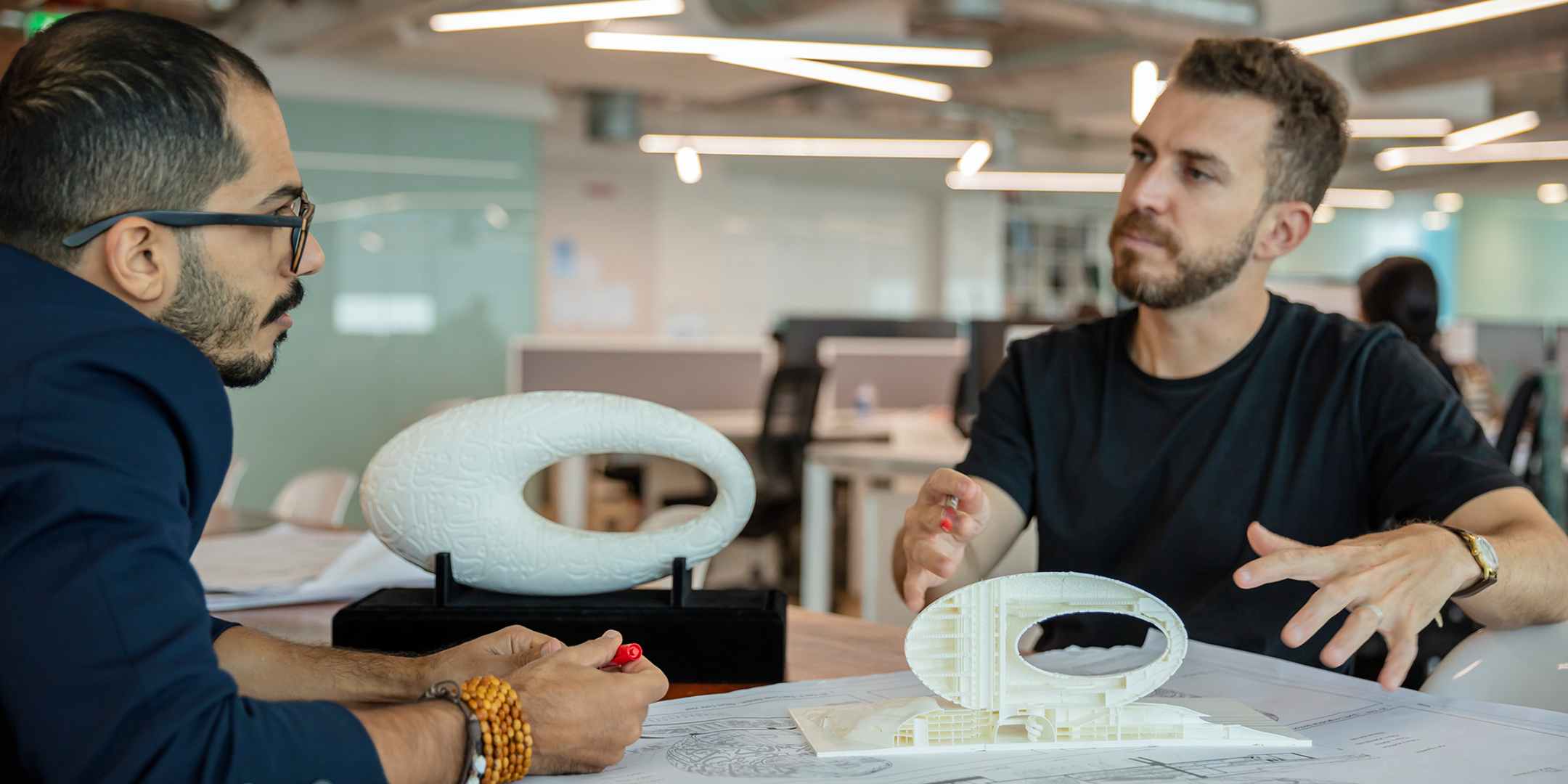Humans have the unique ability to create and appreciate art. This is an innate ability that has aided humans in the construction of communities, societies, and civilizations over centuries of existence. Art has a cherished legacy as well, so much so that even though the earliest civilizations have long perished, their memories are preserved in the art of those times.
In today's world, 3D printing technology is disrupting what can be created by arming everybosy with the means to make new and interesting 3D printed art.
If you have an artistic flair and are eager to try out 3D printing, keep reading to learn how to create your own artworks.
What makes 3D printed art so special?
Art is often associated with imagination. Without this fundamental skill, you can't create innovative art. But bringing that imagined art form to life is an altogether different challenge.
Converting art into a real-world model forces you to confront physical realities & limitations. These limitations can dilute the original ideas of an artist. This is why 3D printed art is so special.
3D printing eliminates traditional manufacturing constraints and thus is capable of giving life to the imagined art. This newfound freedom is reviving art.
The technology is easily accessible and is quite affordable. With access to a 3D printer, everyone can create their own art. This democratisation of art through 3D printing has led to the rise of new artists with innovative designs. Herschel Shapiro, Devin Montes, JBV, and others are exploring these new possibilities in amazing ways.
Examples of 3D printed art
You must have realised what makes 3D printing art so unique, but what 3D printed art can you actually create? We have some examples for you to look at and be inspired by.
The Visual Arts
Equinox, a unique optical illusion, was featured at the Dubai World Expo of 2020. The Terra Pavilion's centrepiece was a massive lotus flower. Mat Collishaw used 3D printing to create the petals for this lotus flower.
Museums
Iris van Herpen is a Dutch fashion designer who specialises in 3D printed garments. Van Herpen participates in exhibitions all over the world in addition to creating two new collections each year. The Transforming Fashion exhibition, which featured 3D printed garments, debuted in 2018 at the Cincinnati Art Museum.
You can even find multiple 3D printed art use cases in museums.
Music
Art is not limited to structures, but some artists go above and beyond. Gilles Azzaro, a French artist, uses 3D printing to transform recordings of sound waves into tangible art forms. The cries of his dear friend's newborn baby is one of his most popular works.
How to make your own 3D printed art
If any of the above examples have inspired you, why not learn how to make your own 3D printed artwork? You can get started in one of three ways.
Where to find STL files?
Finding STL files of designed artworks is the simplest way to get started. Once you find the design files, all you need is a good 3D printer to 3D print it. But how do you find the STL files?
You can search on popular 3D printing communities where designers share their design files under various creative licences. These communities provide millions of free design files, as well as some that can be purchased.
Thingiverse, MyMiniFactory, GrabCAD, Cults, Pinshape, CGTrader, Prusa Printers, and more are some of the popular communities where you can find relevant STL files. If you want to know more, you can read the dedicated article we wrote on how to find free STL files.
Remixed Designs
Did you know that some of the designs available on online repositories can be edited and modified under creative commons license? This gives you a unique advantage as you can use an existing design and modify it to your style, likes, and preferences. This is a great alternative to using existing designs or creating one from scratch. You can simply use the uploaded designs as a stepping stone and create a unique design from there.
3D design software to make your own
The next method can be quite daunting but also enjoyable and extremely rewarding. You can create your own digital designs by using 3D design software. You will need software that is appropriate for your purpose as well as design skills for this.
If you're new to design, you can start with programmes like Tinkercad, Blender, OnShape, Vectary, and others. The main benefit of these programmes is that they are either free or have free versions to get you started. They are simple to learn, and new students will quickly grasp the design process. You can use any of the software mentioned above, depending on your design needs. Tinkercad uses solid modelling, Blender is great for artistic modelling, OnShape is ideal for parametric modelling while Vectary is a no-fuss web-based modelling software for beginners.
If you are an experienced designer, you can also use more professional tools like Autodesk Maya, ZBrush, Mudbox, and other similar software. These are paid software applications designed for professionals. These primarily concentrate on artistic modelling, in which you want to control every node of the design and modify it into creative and complex designs. This freedom is ideal if you wish to create art using the mentioned software applications.
How to post process 3D prints
The process of making art not need to end once your 3D print is complete, it’s also possible to customize or improve your printed part by painting it, polishing it, and more. There are a number of post-processing options:
You can start by sanding your 3D prints to remove the layer lines that are common in most 3D printing processes. Start with a low grit sandpaper (usually 150 grit) and gradually progress to higher grit sandpapers such as 400 grit and upwards
If your 3D print is in ABS, then acetone vapour smoothing will assist you in giving the printed part a shiny polished surface finish. However, this process is difficult as it’s hard to control how much material will evaporate from which area and thus may affect the dimensional accuracy of your print. Use this method with caution
Next, you can paint or dye your 3D printed part. This helps in improving the aesthetics of your prints
You can also glue 3D printed parts. In this popular post-processing technique, multiple smaller parts are glued together to form a collective larger item. Which glue you use will depend on the material your print is made from. PLA is a common material used for printed art parts that can be easily glued together using a cyanoacrylate-based glue
Polishing, hydrographics, and electroplating are some other more advanced post-processing techniques that can result in a unique final product
I hope you have enjoyed learning about 3D printed art. If you feel inspired, we encourage you to share some of your favourite additive-assisted art with us on Twitter, Instagram and Facebook.
If you want to start creating 3D printed art today, download Ultimaker Cura to get started!
























